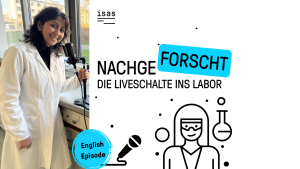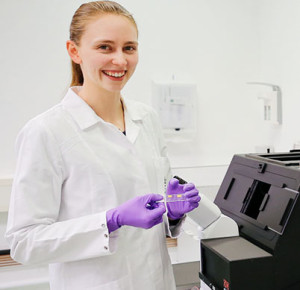Dortmund, 9th April 2025
How does an inflammation develop? And how do you identify pathogens like viruses and bacteria? At the Girls’ Day 2025 at ISAS, twelve schoolgirls were able to find out exactly that. The girls with an age from 13 to 14 years spent a school day getting to know the work of the female researchers and technical assistants at the institute. Under the motto “Bacteria & Candy: What does our breath tell us?” they collected germs from the surroundings of the institute, cultivated them and gained insights into headspace and breath analysis using the ion nobility spectrometer (IMS) (see infobox).
Hunting bacteria
The day started for the young visitors with a short introduction to the topic of inflammation: How it occurs, how to recognize it and how to fight it. Afterwards, the schoolgirls went on a hunt for bacteria from the surrounding areas. Equipped with agar plates, they set off for the institute’s kitchen sponges and plants. They even picked up germs from the air. Then just put the lid on and label it – and the hunt was over for the schoolgirls. The collected germs, on the other hand, went to the incubator: At a balmy 37°C they were able to multiply happily.
Bacteria and vegan jelly
After the successful hunt, the young female researchers went straight to the laboratory: Accompanied by Prisca Weider, PhD student, and Lisa Chmielewski, technical assistant, the girls worked alternately in two groups on the production of bacterial cultures and the analysis of their own breath.
A few basic lab rules also apply on Girls’ Day: Wearing a lab coat and gloves is mandatory! The girls continued with the introduction to the first experiment: How do I pour an agar plate? Why is the substance from algae an ideal nutrient soil for bacteria? Where is the difference between the plant-based gelling agent and vegan jelly? Under the guidance of Dr Christina Sengstock, the female participants got hands on experience with the agar plates. The first task: Make samples with unwashed, washed and disinfected hands. After the high five with the agar plate, the young female researchers learned about the effect of silver acetate on Escherichia coli. However, a sterile environment is necessary for this experiments. Fire is a common tool to achieve this. So the girls stood around three ignited Bunsen burners equipped with pipettes and began the plating process. The Girls’ Day was a change of pace for Sengstock: “I find it refreshing to meet young people and find out what their interests are. It's nice to know that there is still interest in our profession. You always ask yourself: can we manage to get young people excited about science?”
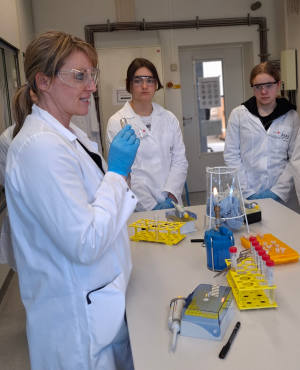
Dr Christina Sengstock explains the plating experiment to the students. Mia (14, left), Helene (13, right) listen attentively.
© ISAS
Sweets for science
Meanwhile, one floor down, PhD students Annika Fechner and Luisa Speicher were handing out bonbons to their group. "If you want to show the schoolgirls something in the laboratory, you have to think about how to explain it beforehand, of course. Things that are part of everyday life for us don't have to be just as understandable for them," says Fechner. For her experiment, she carried out breath measurements with the girls at the IMS. The volatile organic compounds (VOCs) contained in the air we breathe can be used for the early detection of diseases such as pneumonia. For demonstration purposes, Fechner used differently flavoured candy.. The IMS analysed the fragrance componentsin the participants' cherry or mint breath which acted as “placeholders” for the VOCs that are produced during illnesses. The participants also prepared candy solutions for a so called headspace or vapor space analysis. This enabled them to analyse the sample components based on the gases emitted from the sample. After a lunch break and subsequent evaluation of the experiments, the day ended for the visitors.
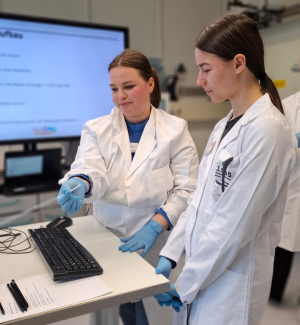
PhD student Annika Fechner hands Helene (13) the mouthpiece for the breath analysis with the ion mobility spectrometer.
© ISAS
Headspace & breath measurement with the IMS
The ion mobility spectrometer (IMS) ionises substances in a sample and then separates them in an electric field based on the drift velocity. This depends on the size, mass and charge of the ions. In this way, specific substances can be identified. When measuring breath, the IMS can determine the individual components of the exhaled air. Headspace or vapor space analysis, on the other hand, concentrates on the volatile components above a solid or liquid sample. The gases that escape from the sample - for example from a crushed piece of candy - can be specifically analysed for their chemical components using the IMS.
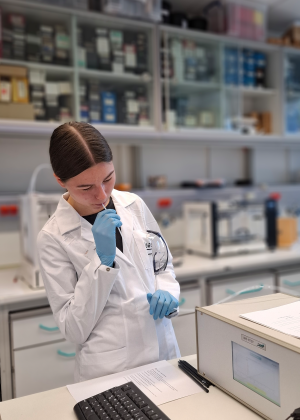
Helene (13) has received a bonbon and is analysing her breath with the ion mobility spectrometer. Now it's time to blow!
© ISAS
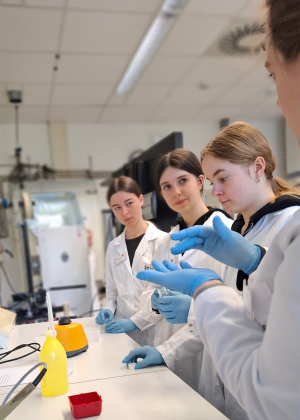
For the headspace analysis, the young researchers first have to prepare the candy samples. PhD student Luisa Speicher explains to Helene (13), Emma (14) and Helene (13) (from front to back) how to shake the samples vigorously with the vortex mixer.
© ISAS
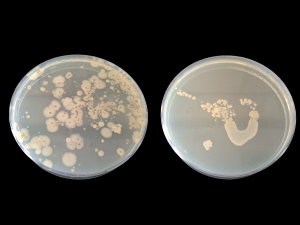
After 24 hours in the incubator, the yield of the bacterial hunt becomes visible to the bare eye: the bacteria from the potting soil (left) and a rinsing sponge (right) have visibly multiplied.
The Girls' Day 2025 at ISAS was coordinated by the Communications team with the active support of two student interns. Anna Becker planned the day for the young participants and helped with the implementation. Lena Kantert supported her. Both are studying science journalism at the Technical University of Dortmund.
(Lena Kantert)
